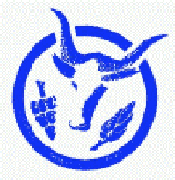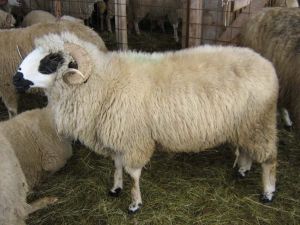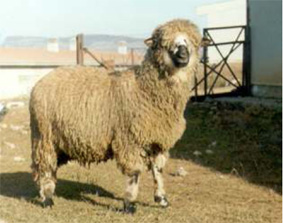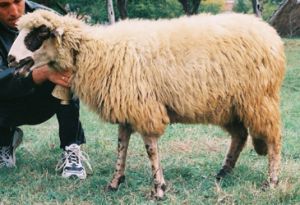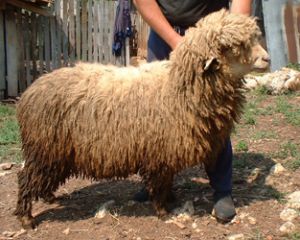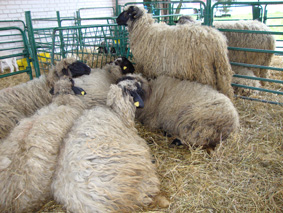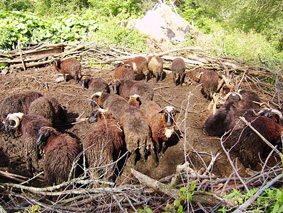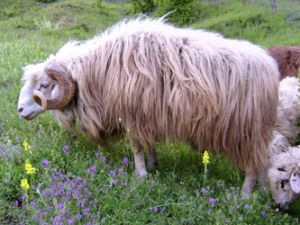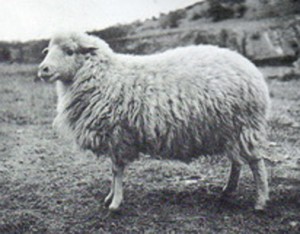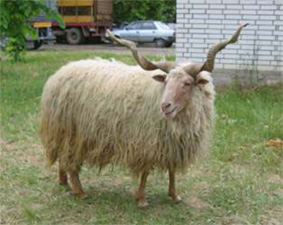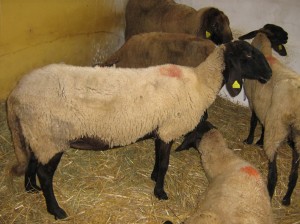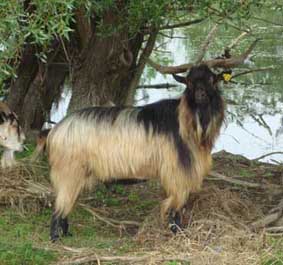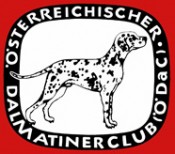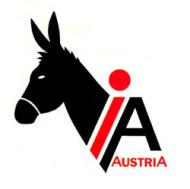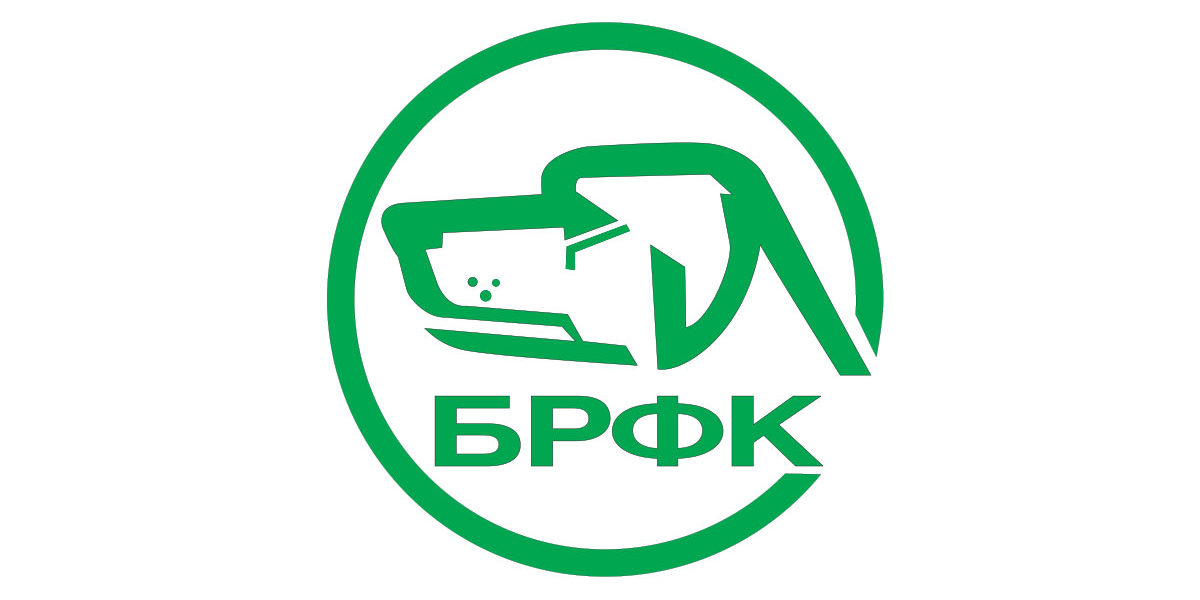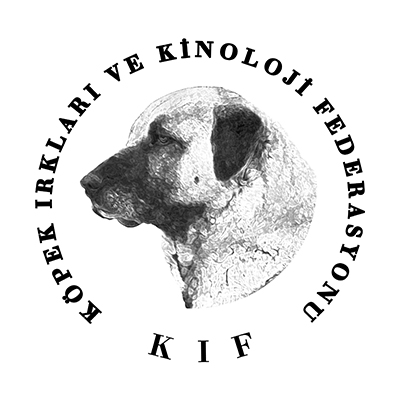Sjenica-Pester sheep
Sjenica-Pester sheep, with its number and geographical distribution is the most common breed of sheep in the territory of Serbia. This sheep breed has developed on Pester plateau around the town of Sjenica. However, Sjenica sheep, or Vasojevic sheep, as it is also called, is raised in the wide area of western Serbia, eastern part of Bosnia and Herzegovina and northern part of Montenegro. Rarely can one find a pure Sjenica sheep in Serbia nowadays. There are usually individuals crossbred with merino sheep.
Appearance and traits:
Sjenica sheep is large. The wither height of rams is 2.13 feet (65 cm), whereas the wither height of ewes equals 1.97 feet (60 cm). The average ram weight is 120 pounds (60kg) while ewes weigh 90 pounds. The musculature is medium developed. It is used for meat, milk and wool production. It yields 120-160 pints (60-80 liters) of milk in the period of lactation. The weight of newborn lambs equals 8 pounds. Fleece color is almost always white, although there is a small percentage of black sheep. Their head is covered with white hairs with the characteristic dark pigmented spots on the top of the muzzle, around the eyes and on the ears. The muzzle of any typical Sjenica sheep is pigmented only on the top whereas they have small or large circles around the eyes in the shape of glasses and the ears are pigmented on the top half. The legs are white or with dark spots. The body is covered with medium length wool, funnel-shaped tussocks and half-closed fleece. The annual wool yield varies from 3 to 4 pounds (1.5-2 kg). (Photo: Milivoje Urošević)
Status: not endangered
Population in Serbia: 10 000 – 100000 individuals in 2004 (data source DAD-IS FAO)
_______________________________________________________________________________________
Svrljig sheep
Svrljig sheep or Gulijan sheep, is raised around Svrljig and in one part of eastern Serbia. It belongs to the breed of long-tailed sheep.
Appearance and traits:
The whither height of rams is around 2.3 feet (70 cm) and the wither height for ewes is around 2.13 feet (65 cm). The average body weight in rams equals about 130 pounds and about 156 pounds in ewes. Rams are characterized by curved horns. The breed is used for meat, milk and wool production. It produces around 160 pints (80 liters) of milk in the period of lactation. The weight of newborn lambs is about 9 pounds (18 kg). The body is densely covered with wool. The poll and one part of the forehead are covered with wool which forms the characteristic crest. Top parts of the legs are covered with wool. This sheep has half-closed fleece. It produces from 3.6 to 4.4 pounds (1.8kg-2.2kg) of wool annually. Its color is white with black spots on the muzzle, cheeks, ears and legs.
Status: not endangered
Population in Serbia: 10000 – 100000 individuals in 2004 (data source DAD-IS FAO)
_______________________________________________________________________________________
Pirot sheep
This breed of sheep is the most common in the area around the town of Pirot, where it has been developed and after which it has been named. Pirot sheep belongs to the group of long-tailed sheep.
Appearance and traits:
The wither height is around 1.8 feet. The body weight of adult ewes varies from 72 to 82 pounds (36-41 kg) on average whereas rams weigh from 100 to 110 pounds (50-55 kg). Ewes are covered with white wool and there are heads with black and grayish wool. They produce from 2.4 to 2.8 pounds (1.2-1.4 kg) of wool while rams produce around 3 pounds (1.5kg) of wool annually. The widely known Pirot rug is made from the wool of Pirot sheep in the town of Pirot and its vicinity. The ewes produce from 150-160 pints (75- 80 liters) of milk in 6 months of lactation, including the milk suckled by a lamb. This is a slowly maturing breed. Ewes are hornless while rams are horned. The work on crossbreeding these ewes with Merino Arles rams and Württemberg breed has been ongoing since 1954. Using the method of combined crossing with the application of rigorous selection, a much more productive genotype has been generated, the so-called Pirot improved sheep.
Status: endangered
Population in Serbia: 500-1000 individuals in 2009 (data source DAD-IS FAO)
_______________________________________________________________________________________
Krivi Vir sheep
Krivi Vir sheep is a breed of sheep raised in Serbia, in the vicinity of the town of Krivi Vir, after which it was named. It belongs to the group of medium large short-tailed sheep.
Appearance and traits:
The average body weight of ewes is about 76 pounds (38 kg) while rams weigh around 100 pounds (50 kg). The wither height is around 2.13 feet (65cm) for rams and around 1.97 feet (60 cm) for ewes. It is raised for meat, milk and wool production. The fleece is open, consisted of pointed tussocks and it can be half-closed in good heads, because this breed is half way between Ruda sheep and the coarse-wooled breed. The average annual yield of unwashed wool is about 3 pounds (1.5 kg) for ewes and about 4 pounds (2 kg) for rams. The color of wool is white. The head and the legs are covered with solid yellow or dotted yellow hair. There are long tussocks of wool on the forehead and poll that form a crest. The average milk yield of this breed is about 60 pints (30 liters), excluding the milk suckled by a lamb. The average prolificacy varies up to 110%. This is a slow maturing breed. Ewes are hornless while rams have well developed curved horns.
Status: endangered
Population in Serbia: 500-1000 individuals in 2009 (data source DAD-IS FAO)
_______________________________________________________________________________________
Lipa sheep
Lipa sheep is a breed of sheep, developed in the vicinity of the town of Smederevo and the village of Lipa, after which it has been named. It belongs to the group of medium large sheep.
Appearance and characteristics:
Ram whither height is 2.13 feet (65 cm) and ewe wither height is 1.97 feet (60 cm). Ram body weight is 120 pounds (60 kg) whereas ewe body weight is 100 pounds (50 kg). It is used for milk, meat and wool production. It is densely covered with wool and the fleece is half-closed. The annual yield of wool varies from 4 to 12 pounds (2-6 kg). The color of the wool is white. The head and the legs are covered with black hair. Rams have horns. (Photo: Milivoje Urošević)
Status: endangered
Population in Serbia: 500- 1000 individuals in 2009 (data source DAD-IS FAO)
_______________________________________________________________________________________
Karakachan sheep
Karakachan sheep is an autochthonous breed, raised by Vlachs and Karakachans long time ago. It belongs to the smallest breeds of sheep.
Appearance and characteristics:
The wither height of ewes equals 1.8 feet( 55 cm) and the wither height of rams equals about 1.97 (60 cm) on average. The body weight of adult ewes varies from 46 to 80 pounds (23-40 kg) and rams weigh about 70 pounds (35 kg). They are covered with the characteristic black wool which in few cases can be brown or even white. The face, ears and legs are covered with short black hair. The fleece consists of open tussocks with fibers without curls. The annual yield of unwashed wool of ewes varies from 2.2 and 2.6 pounds (1.1-1.3 kg) while rams yield around 3 pounds (1.5 kg) of wool. The average milk yield is about 50 pints (25 liters),without the milk suckled by a lamb. Karakachan sheep has a firm body and strong constitution. It doesn’t require much and it is very resistant but their productivity is low. It belongs to the group of extremely short-tailed sheep. It is a slowly maturing breed. 100 ewes produce about 105 lambs. Rams have horns while ewes are hornless except that ewes as well may have them in small number of cases.
Status: critically endangered
Population in Serbia: estimated about 100 individuals (source Rare Breeds and Varieties of the Balkans, Atlas 2009, Monitoring Institute for Rare Breeds and Seeds in Europe).
_______________________________________________________________________________________
White Metohija sheep – Bardoka
The white Metohija breed of sheep is an autochthonous one, the most common in Metohija after which it has been named. Besides Metohija, it is also raised in Kosovo and some parts of Montenegro as well. Metohija sheep is entirely white, hence the name Bardoka (the Albanian word for white sheep).
Appearance and characteristics:
Their entire body is covered with white wool while the head, ears and legs are covered with white hair. The fleece is open, consisted of very coarse fibers and fine ones, which reduce its average coarseness. The fibers aren’t curvy. The annual wool yield varies from 3 to 4 pounds (1.5-2 kg) for ewes and about 5 pounds (2.5 kg) for rams. Bardoka belongs to large sheep breeds. The whither height equals 2.03 feet (62 cm) for adult ewes and 2.3 (70 cm) feet for adult rams. The body weight varies from 76 to 90 pounds (38-45 kg) for ewes and from 120 to 114 pounds (60-67 kg) for rams. The white Metohija sheep or Bardoka is considered one of the sheep breeds which produce the greatest quantity of milk in Serbia. It produces 200 pints (100 liters) of milk in quite modest raising conditions, including the quantity suckled by a lamb in 6 months of lactation. However, its prolificacy is quite low. 100 ewes produce 105 lambs. It belongs to the group of short-tailed sheep. It matures slowly. Ewes are hornless while rams have strong horns.
Status: endangered
Population in Serbia: 100-1000 individuals in2009 (data source DAD-IS FAO)
_______________________________________________________________________________________
Balusa
It is one of the largest breeds of sheep, a variety of white Metohija sheep. It is raised in the southern region of Serbia. The wither height is 3.28 feet (100 cm) for rams and about 2.79 feet ( 85 cm)for ewes. The body weight of rams equals about 130 pounds while ewes weigh about 110 pounds. It is mostly raised for milk production. It produces about 100 liters of milk in the period of lactation. Its color is white. The head is covered with black hair. Rams have horns whereas ewes are hornless.
Status: endangered
Population in Serbia: about 1000 individuals estimated (source Rare Breeds and Varieties of the Balkan, Atlas 2009, Monitoring Institute for Rare Breeds and Seeds in Europe).
_______________________________________________________________________________________
Sar Mountains sheep
It is mostly raised in Kosovo, in the region of the Šar Mountains, after which it has been named. It belongs to the class of short-tailed sheep, and according to its size it can rather be classified into small than medium-sized sheep. The wither height is about 1.9 feet (58 cm). The body weight equals from 90 to 100 pounds (45-50 kg) for rams and from 64 to 70 pounds (32-35 kg) for ewes. This breed is the only breed of domestic sheep which has solid white wool without black or grayish fibers. The head and legs are covered with hair, which is also white without any pigmented areas. The quantity of wool covering the Šar mountains sheep is not satisfactory. The fleece is open, frequently divided along the spine and the tussocks are pointed. On average, ewes yield 2.6 pounds (1.3 kg) and rams yield 3.2 pounds (1.6 kg) of unwashed wool annually . The quantity of milk it produces equals 180 pints (90 liters), including the quantity suckled by lambs.
(Photo: “Album rasa stoke” academician Jovan Belic. Naučna knjiga, Belgrade 1991).
There are no data about the status and population of this breed in Serbia.
_______________________________________________________________________________________
Horn-twisted sheep
Horn-twisted sheep is also called Vlach horn-twisted sheep or Dub sheep.
Appearance and characteristics:
It is one of the smallest sheep in size. They have very strong constitution and spend almost all their life on pastures. The whither height of rams is about 1.87 feet (57 cm) and their body weight is about 80 pounds (40 kg) on average. The wither height of ewes is 1.6 feet (50 cm) and their body weight is 70 pounds (35 kg) on average. They are used for milk, meat and wool production. The type of the wool is open with long tussocks. The fibers are straight. The fleece color is white or light brown. The head as well as the legs are covered with white hair. The big spirally twisted horns which grow upward are located on the head.
Status: endangered
Population in Serbia 500-1000 individuals (data source DAD-IS FAO)
_______________________________________________________________________________________
Cigaja sheep
Cigaja is a sheep breed living in plains, with combined abilities, used for milk, wool and meat production. It originates from the sheep from Asia Minor, from which it has spread towards Eastern Europe. It spread from Romania to Serbia in 18th century. Due to good adaptation to raising conditions in plains, the habitat of Cigaja sheep is the Pannonian plain. It is raised in Romania, Hungary, a part of Bulgaria and in Vojvodina and the plain areas of Serbia, especially Pomoravlje (the area around the river Morava).
Appearance and characteristics:
Whither height equals 2.2 feet (67 cm) on average (1.97-2.49 feet, 60-76 cm) for ewes and 2.46 feet (75 cm), (2.3-2.79 feet, 70-85 cm) for rams. The medium length trunk is deep, relatively narrow and rectangular. The chest is deep but quite narrow. The withers is always slightly shorter than the loins. The spine line is straight. The pelvis is somewhat tilted. The legs are long with strong bones, firm hooves and always covered with black or brown hair. The fleece of the Cigaja sheep varies from half-closed to closed, consisting of cylindrical or funnel-shaped locks.On average, ewes produce 5-8 pounds (2.5-4 kg) while rams produce 7-10 pounds (3.5-5kg) of unwashed wool. The body weight of adult ewes equals 140-150 pounds(70-75 kg), whereas rams weigh 220-240 pounds (110-120 kg) on average. If fed intensively, Cigaja lambs reach the weight of 62 pounds (31 kg) when they are 90 days old. The milk yield of the Cigaja sheep is really high and it varies from 100 to 300 pints (50- 150 liters) in the lactation period of 6 months.
Status: not endangered
Population in Serbia: 12000 – 15000 individuals in 2004 (data source DAD-IS FAO)
_______________________________________________________________________________________
Balkan goat
Domestic Balkan goat is a typical example of primitive breeds with poor productive characteristics. It is the most common in hilly and mountain regions of Serbia.
Appearance and characteristics:
Their average wither height is about 2.13 feet (65 cm) and their weight is 68-80 pounds (34-40 kg). The hair is long and can have any variety of color. Bucks have big and well-developed horns on the head whereas goats have small ones. It doesn’t mature until it is 2 years old. It produces 1 or 2 kids. The lactation period is short and it lasts 7-8 months. It is very tolerant to low temperature. (Photo: Milivoje Urošević)
Status: endangered
Population in Serbia: 500-1000 individuals in 2009 (data source DAD-IS FAO)
_______________________________________________________________________________________




